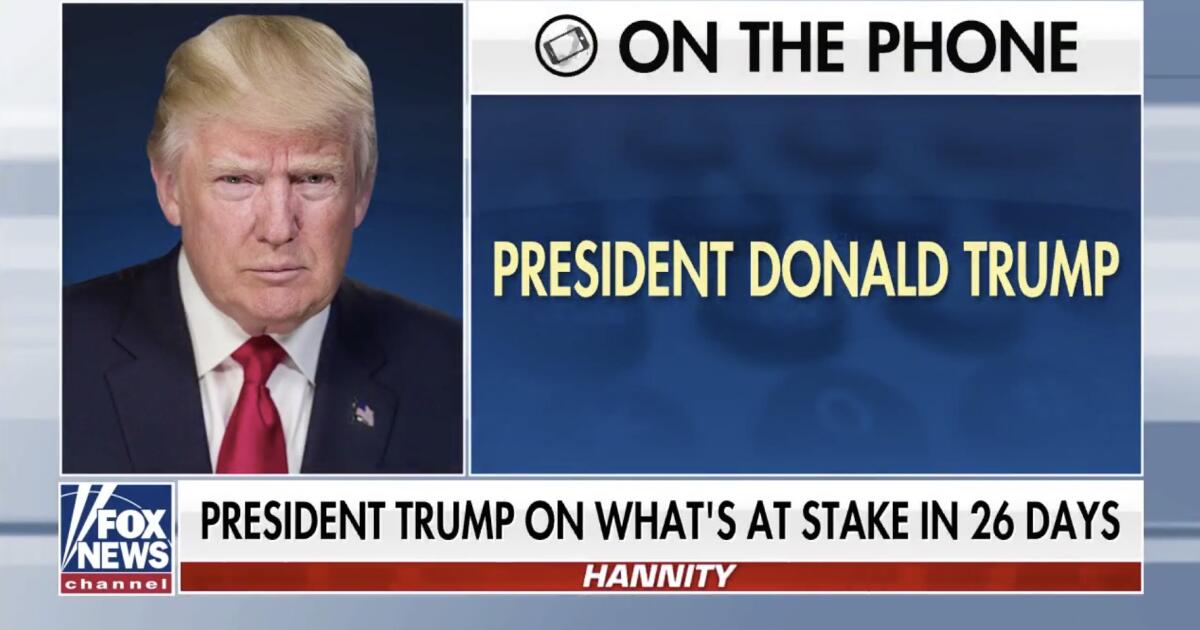Fact-Checking the Congressional Debate on Ratifying the Election Results
— Representative Andy Harris, Republican of Maryland
This is misleading.
In September, the Pennsylvania Supreme Court issued a decision allowing Pennsylvania to accept mail-in ballots received up to three days after Election Day. The decision was an accommodation for the extraordinary circumstances of a widespread coronavirus pandemic affecting millions of voters in the state and concerns about the ability of the Postal Service to deliver ballots on time.
In its opinion, the Pennsylvania Supreme Court wrote that it had the “authority to provide relief when there is a natural disaster or emergency” that threatened to “deprive electors of the opportunity to participate in the electoral process.”
After the state court ruling, the Republican Party of Pennsylvania filed an appeal to the U.S. Supreme Court to overturn the ruling. But the Supreme Court declined to take up the challenge in October, leaving the original state court ruling in place.
— Representative Marjorie Taylor Greene, Republican of Georgia
False.
Ms. Greene, a newly elected representative who has promoted the baseless QAnon conspiracy theory, was referring to voting machines made by Dominion Voting Systems. She claimed Democrats had lied in saying that the machines were not vulnerable to hacking because they were not connected to the internet.
In fact, numerous officials — including election authorities and the chief executive of Dominion, John Poulos, who testified under oath last month before the Michigan Senate Oversight Committee — have largely confirmed Democrats’ statements. In some places, Mr. Poulos testified, modems are briefly used to transmit results, but only after the polls have closed and not for a long enough period of time to create a risk of hacking.
Mr. Poulos’s testimony pertained to Dominion’s machines in Antrim County, Mich., but officials elsewhere have reiterated that the machines in their jurisdictions were not connected to the internet either. Just this week, Gabriel Sterling, a Republican election official in Georgia, told reporters that the machines had no modems.
“It’s very hard to hack things without modems,” Mr. Sterling said.
— Representative Marjorie Taylor Greene, Republican of Georgia
False
The Trump campaign and its allies have brought 60-some lawsuits challenging various aspects of the voting system and the counting, and have won one. Some cases have been thrown out for procedural reasons including a lack of standing by the plaintiffs to bring the suits. But a New York Times tally found that two-thirds of the lawsuits did not allege voter fraud. In the nearly dozen that did, the claims collapsed under scrutiny. For example, the Trump campaign in Nevada claimed that its experts had found “120,000 unique instances of voter fraud.” A court in Nevada said the campaign presented “no credible or reliable evidence that the 2020 general election in Nevada was affected by fraud” and that its expert testimony “was of little to no value.”
— Representative Scott Perry, Republican of Pennsylvania
False.
Mr. Perry was referring to an unproven assertion that the addition of drop boxes last year as an option for Pennsylvania voters to return their ballots allowed for ballots to be “harvested,” or collected and dropped off in bulk by unauthorized people. There has been no evidence presented of any such unlawful activity in the state.
It is also false that the addition of ballot drop boxes as an option for voters was unlawfully pushed though by the Pennsylvania Supreme Court. The court, following due process, ruled in September that voters in the state could use drop boxes, which other states have used for years without any issues.
— Representative Scott Perry, Republican of Pennsylvania
False.
This figure comes from a faulty analysis conducted by state Republican lawmakers. The analysis relied on voter history records uploaded to a database called the Statewide Uniform Registry of Electors.
But the Pennsylvania’s Department of State said the database was incomplete because a few counties — including Philadelphia and Allegheny Counties, the two largest in the state — had yet to fully upload their data. In reality, more than 6.9 million Pennsylvanians voted in the 2020 presidential election out of more than 9 million registered voters.
“It is however the vote counts certified by the counties, not the uploading of voter histories into the SURE system, that determines the ultimate certification of an election by the counties to the Department, and then in turn, by the secretary based on the county certifications,” the Pennsylvania Department of State wrote, calling the analysis “obvious misinformation.”
— Representative Elise Stefanik, Republican of New York
False.
There have been no legitimate claims that poll watchers were not able to observe counts in Michigan, or that the illegal counting of ballots ever took place.
In Detroit, one vote-counting site did cover its windows the day after Election Day because, as an election official said, poll workers inside had expressed concerns about people taking unauthorized photos and videos of their work.
Additionally, no evidence has been presented that postal workers hand-stamped ballots with the previous day’s date. But even if it had, it would not change the election results in the state: Michigan law states that mail-in ballots “must reach the clerk or an authorized assistant of the clerk before the close of the polls on Election Day.”
— Representative Elise Stefanik, Republican of New York
False.
Wisconsin election law requires a copy of acceptable photo ID in a voter’s first absentee application by mail. But voters who are “indefinitely confined” because of illness or disability do not need to provide a photo ID with their absentee ballot requests, and their signature on the ballot satisfies the photo ID requirement — a law that the Wisconsin Supreme Court upheld last month.
The State Supreme Court also ruled that it was up to each voter to decide whether they qualified as indefinitely confined, including in relation to being confined because of the pandemic.
The state law “requires that each elector make an individual assessment to determine whether he or she qualifies as indefinitely confined or disabled for an indefinite period,” Chief Justice Patience Roggensack wrote in the majority decision.
— Representative Lee Zeldin, Republican of New York
This is misleading.
In a lawsuit, the Trump campaign objected to “Democracy in the Park” events held in Madison, Wis., where election officials collected some 17,000 completed absentee ballots, arguing that this was illegal and tantamount to early voting. A court in Wisconsin rejected that argument, noting that the Trump campaign was essentially asking to disenfranchise voters and that it did not object to the well-publicized events until after the president had lost the election.
— Representative Matt Gaetz, Republican of Florida
False.
Soon after a pro-Trump mob stormed the Capitol on Wednesday, members of the far right began pushing the unfounded claim that the mob was made up of liberal activists only posing as Trump supporters.
Several posts on social media shared by thousands of people held up photographs as evidence that supporters of antifa — a loosely organized collective of antifascist activists — were behind the unrest. The far right website The Washington Times published an article that said two men seen in photos from inside the Capitol matched two antifa members from Philadelphia.
But those images did not, in fact, reveal antifa involvement. Instead, some of the photographs, and the information contained in them, were matched to an antifa site intended to expose known individuals in the neo-Nazi movement.
— Representative Mo Brooks, Republican of Alabama
False.
There is no evidence that Democrats enlisted noncitizens to interfere in the elections last year. After bringing some 60 lawsuits, and even offering financial incentive for information about fraud, President Trump and his allies failed to prove definitively a single case of illegal voting on behalf of their opponent in court, including any cases of undocumented immigrants casting ballots.
Top election officials across the country contacted by The New York Times after the November election said that there was no evidence that fraud or other irregularities played a role in the outcome of the presidential race.
A 2017 analysis by New York University’s Brennan Center for Justice based on information from local election administrators found that noncitizen voting in the 2016 election was exceedingly rare.
— Representative Elise Stefanik, Republican of New York
This is misleading.
It’s true that Democratic lawmakers have objected to counting a state’s electors after the elections of Republican presidents in 2001, 2005 and 2017, but none did so in 1989. Moreover, Ms. Stefanik is neglecting to mention that the objections were overruled in 2001 and 2017. And unlike President Trump, the losing candidate in all three years had already conceded, making the objections largely symbolic rather than part of a concerted effort to block or overturn the result.
An objection must be made and signed by both a member of the House and the Senate. In 2001 and 2017, the objecting House members were unable to find a senator to co-sign, and were overruled by the presiding chairs at the time, Vice President Al Gore and Vice President Joseph R. Biden Jr. In 2005, two Democrats serving in Congress at the time — Representative Stephanie Tubbs Jones of Ohio and Senator Barbara Boxer of California — objected to counting Ohio’s electoral votes. The two chambers then convened debate and rejected the objections.
— Representative Elise Stefanik, Republican of New York
False.
In Georgia, there are two signature matches required by state election law for absentee ballots. The first is when a voter requests an absentee ballot and signs the application. The second is when voters sign the outer envelope for the ballot. At this point, the signature is checked against the absentee ballot application and voter registration. No signature matching is required during the audit or recount process. It could be ordered by a court, but Georgia’s secretary of state, Brad Raffensperger, a Republican, said there was no basis to conduct such an audit.
— Senator Josh Hawley, Republican of Missouri
This is misleading.
Mr. Hawley was referring to Act 77, which Pennsylvania legislators passed in 2019. He argued on Wednesday night that the act had violated “a state constitution that has been interpreted for over a century to say there is no mail-in balloting permitted, except in very narrow circumstances that’s also provided for in the law.”
The courts have not ruled on the constitutionality of Act 77; the Pennsylvania Supreme Court rejected a postelection challenge on the basis that it was filed too long after the law was enacted. But legal experts have broadly rejected Mr. Hawley’s argument, and the Pennsylvania Constitution says that the state’s elections may be conducted “by ballot or by such other method as may be prescribed by law,” indicating that the legislature has the authority to authorize new voting methods.
Steve Vladeck, a University of Texas constitutional law professor, said Mr. Hawley was essentially claiming that by changing state law, Pennsylvania legislators had violated the state constitution and, in turn, violated the United States Constitution. That is a “crazy argument,” Professor Vladeck said. “It’s not just frivolous; it would turn the Constitution on its head.”
Mr. Hawley also did not mention that Act 77 passed with overwhelming bipartisan support. In fact, most of the opposition at the time came from Democrats who disliked an unrelated provision in the bill. Republicans did not object for months after it was enacted, until it became clear that widespread mail-in voting could benefit Democrats in the presidential election.
— Senator Catherine Cortez Masto, Democrat of Nevada
True.
Shortly after the Nov. 3 election, officials in Maricopa County — home to a majority of Arizona voters — conducted a hand audit of four vote centers. (The county used a new system in the 2020 election that permitted residents to vote in person at any voting location in the county, rather than being limited to their home precinct.) Auditors representing the Republican Party, the Democratic Party and the Libertarian Party chose the centers, and volunteers manually counted the ballots cast at those centers and checked that they matched the machine counts. They did.
— Senator Patrick J. Toomey, Republican of Pennsylvania
True.
Mr. Toomey was referring to members of Congress who invoked “the 1877 precedent” in calling for a 15-member commission to audit the election results.
In the 1876 presidential election, the Democratic candidate, Samuel J. Tilden, won the popular vote, but the Republican candidate, Rutherford B. Hayes, ultimately won the Electoral College in a compromise that ended Reconstruction and that several Republicans have cited as a model for the 2020 election.
An essential difference between the two elections, as Mr. Toomey said, is that in 1876, three states — Louisiana, South Carolina and Florida — sent competing slates of electors to Washington. In such a situation, Congress is explicitly tasked with resolving the dispute and determining which slate to count. This year, there are no competing slates.
*** This article has been archived for your research. The original version from The New York Times can be found here ***







